ISSN: 2511-7602
Journal for Art Market Studies
ISSN: 2511-7602
Journal for Art Market Studies
Malcolm Gee
This article discusses the character of commercial galleries engaged in the promotion of contemporary art in Paris and Berlin during a crucial period, which began with the consolidation of exhibition networks diffusing ‘independent’ art’ at the end of the nineteenth century, and ended with the economic crisis of the 1930s and the Nazi takeover of power in Germany. It examines the types of spaces occupied by these galleries, and their location; the modes of presentation adopted for different types of work, both in terms of hanging and framing and exhibition organisation; and the relation between these matters and the commercial position and practices of the dealers involved. It discusses the evolution of these over the period, and differences and similarities between the situation in the two centres. It concludes with an assessment of the general balance that modern art dealers sustained – with varying degrees of emphasis – between well-established strategies for valorising their products, and newer ones influenced by contemporary design.
This essay explores some key issues concerning the presentation of contemporary art in commercial galleries in the early twentieth century. How did changes in art, and the general context of its production and consumption, affect the ways in which dealers presented it? What viewer experience did displays of modern art in these galleries intend? Were there prevalent models for this, and to what extent did these practices evolve? The discussion focuses on examples from Paris and Berlin. Paris was the most dynamic centre for the exhibition and promotion of new currents in contemporary art practice in Europe. As Berlin established its “Weltstadt” status in the field of art, its commercial infrastructure developed accordingly, and Berlin galleries became increasingly important as sites for the valorisation of “new” art in Germany.
Scholarship in recent years has charted in detail the long process through which the structural organisation of the Parisian art world, based on a single standard-setting Salon, broke down under the combined pressures of sheer quantity of submitted work and the emergence of competing aesthetic propositions, to be replaced, at the end of the century, by a hybrid network of interrelated but differentiated sites of exposure and valorisation, in which commercial galleries played a key role. They allowed selection and exclusivity; they focused on the tastes of private collectors; and, to varying degrees, they supported challenging new initiatives in art practice.1 These businesses took several forms, according to the range of art they sold, the means at their disposal, and the strategies of promotion and display that they adopted. In a note to his employer concerning the possible creation of an art gallery linked to the newspaper L’Excelsior, Louis Vauxcelles made a distinction between the function of “art dealer” and “exhibition organiser”. He explained that the business model of the major established galleries, such as the Galerie Georges Petit, combined these two functions: on one hand they sold work held in stock, bought in sales or from artists under contract to them, and on the other they presented temporary individual and group exhibitions during the season. A “Galerie Excelsior” would only be able to operate as an exhibition venue, he argued, because the accumulation of stock required both time and considerable means.2 It was the case that most galleries engaged with contemporary art promoted it through exhibitions, but dealers knew that major financial returns derived from the accumulated value of stock. By the turn of the century the enormous, international, demand for modern French art – including, from the 1880s onwards- Impressionism – had ensured the fortunes of an élite group of dealers, based mainly in the vicinity of the Opéra and the Grands Boulevards, who had had the means, and the vision, to build up holdings in it. In these galleries, which besides Georges Petit, included Boussod and Valadon, Alexandre Rosenberg and Sons, Bernheim-jeune, and Durand-Ruel, exhibitions were primarily means of celebration and consecration, and the principal exhibition spaces in their premises reflected this, although they often disposed of secondary rooms that, as well as being used for intimate viewings, could also accommodate new and challenging work. (Felix Fénéon used a side gallery at Bernheim-jeune specifically for this purpose after 1906.) In some respects, in fact, the grand display areas typical of these establishments were not that well-suited to the relatively small-scale, intimate, character of “progressive” modern art. At a time when he was still fighting to establish the aesthetic credentials of Impressionism, Paul Durand-Ruel had experimented with a series of exhibitions held in an apartment on the Boulevard de la Madeleine. This context corresponded, of course, to the destination of these products, at least in the first instance, the bourgeois interior, and this fact constituted an underlying thread in gallery practices in the future.3 However, the experiment did not entirely satisfy him, and he did not repeat it. In 1887 he re-occupied the extended premises on the rue Laffitte that he had sublet in 1879 under financial pressure, and it was here, over the next thirty years, that the international recognition of the Impressionist “masters” was consolidated and celebrated. As the photograph of a major Renoir exhibition of 1920 shows, subdivision of the gallery area, the use of textile supports, sparse furnishing and an uncluttered hanging of the paintings created a viewing space that combined grandeur with a degree of intimacy, evocative both of the home environments of wealthy clients and the museum rooms that were, gradually, providing definitive consecration of Renoir and his colleagues.4 [Fig. 1]
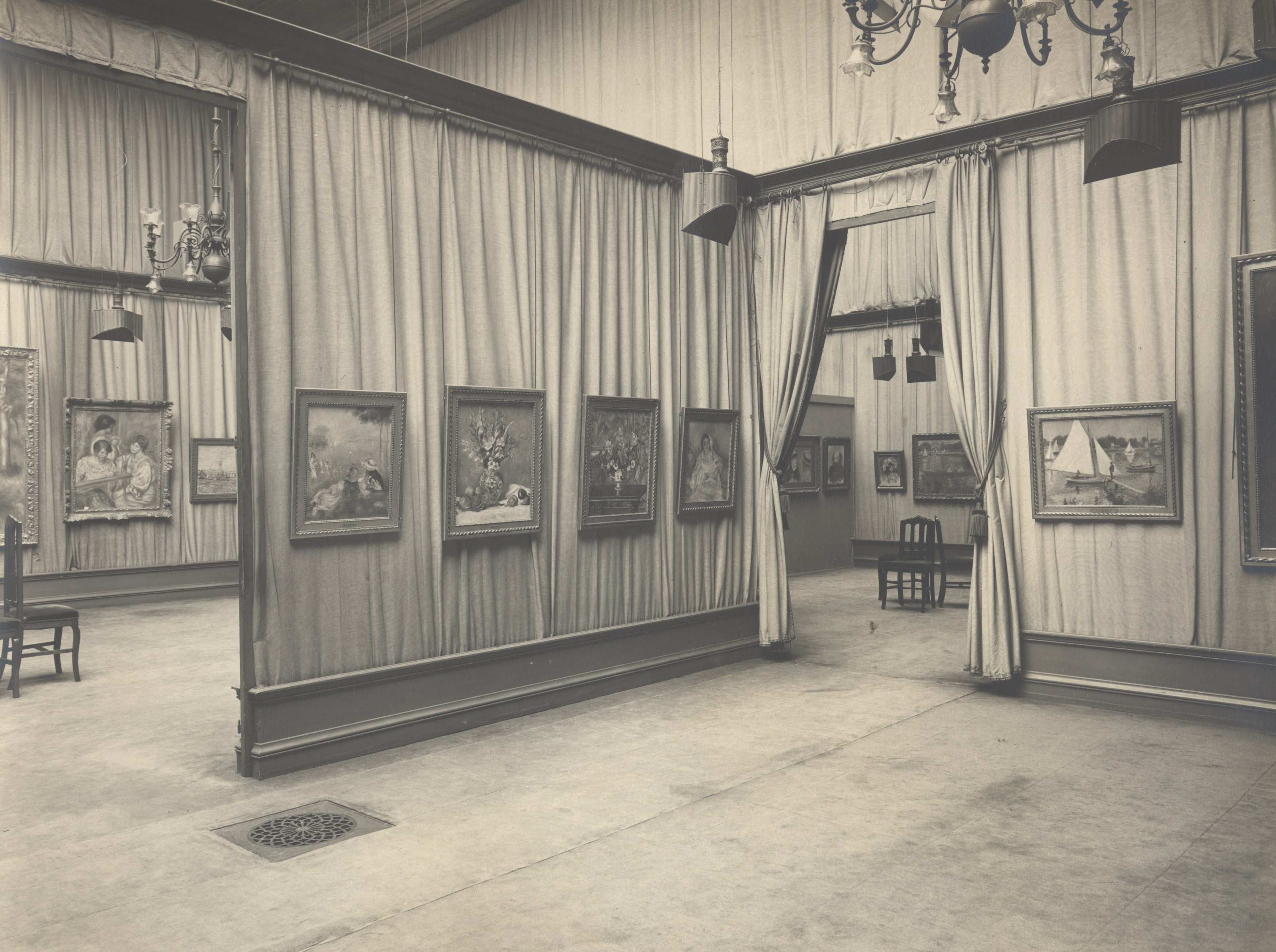
Fig. 1: Galerie Durand-Ruel, Renoir exhibition, 1920
Archives Durand-Ruel © Durand-Ruel & Cie.
Another important and influential feature of the Parisian art scene at the turn of the century was the number and diversity of smaller galleries, mostly situated on or in the vicinity of the rue Laffitte. It was amongst these that aspiring artists could hope to find their first exposure outside the Salons and exhibiting groups, and some commercial support. In this sector of the market exhibitions had the function of discovery rather than consecration. These galleries did not have the facilities in either space or personnel of the high-end dealers, and displays were modest rather than grandiose. Several of them, including Berthe Weill and Clovis Sagot, corresponded largely to Vauxcelles’ characterisation of exhibition organiser – they mounted shows by young artists and acquired some of their work, but they did not have the means to establish significant stocks. Ambroise Vollard, however, whose first gallery was a cramped shop at 37 rue Laffitte, famously did prosper as an art dealer in Vauxcelles’ terms. He had the perspicacity – and good luck – to re-discover the work of Cézanne at a decisive moment in the development of the market for Impressionism, and to buy substantial numbers of paintings outright. The context in which they were presented was, however, far from grand. At the historic 1895 Cézanne exhibition works were not properly framed and they were crammed onto the walls. Success allowed Vollard to take out larger premises in 1896, comprising a mezzanine and entrance hall as well as a central gallery. However, this was not a grand establishment and Vollard ran it in an idiosyncratic manner that seemed calculated to make prospective clients demonstrate their commitment.5
Similarly – and influenced by Vollard’s example – as soon as he established his gallery in 1907 D-H. Kahnweiler set out to acquire stock. Although he organised a series of exhibitions in 1908 he then abandoned the practice, focusing on buying the output of his select group of artists. The premises on the rue Vignon were very modest and had previously been occupied by a tailor. Kahnweiler had the walls covered with hessian and updated the gas-lighting.6 This was a small, unpretentious space in which works of art were presented simply and modestly for prospective buyers who were committed to “difficult” new art. In the interest of promotion, however, he did collaborate on exhibitions abroad, notably in Germany.
Paris had developed the most diverse and entrepreneurial gallery system in Europe with, in the early years of the twentieth century, particular opportunities for artists exploring new aesthetic directions. However, a similar evolution took place in other art centres as the authority of established institutions was challenged, new exhibition groups formed, and commercial galleries developed their presence and role in supporting artists’ careers. The creation of the Berlin Secession in 1899 was both the culmination of a process of struggle against the perceived mediocrity of existing institutions by internationally minded artists, and an assertion of the importance of the capital on the German art scene.7 It also provided a striking example of the interaction between a “progressive” artists” group and the private commercial sector. Paul and Bruno Cassirer had set up their Kunstsalon in 1898 and were appointed secretaries to the Secession in its founding year. Key figures in the group were attached to the gallery, notably Slevogt, Liebermann and Corinth. The Kunstsalon Cassirer reinforced the network of commercial outlets in Berlin that showed modern art, prominent among which were the Galerie Schulte, the Kunstsalon Gurlitt and, since 1897, the Kunsthandlung Keller & Reiner. It also brought out in a distinctive way the evolving character of promotional spaces in the city. The Cassirers paid great attention to the design of the gallery: they opted for neutral grey walls, as opposed to the familiar plush red; paintings were hung spaced out, and the surrounding decor was restrained; they commissioned Henry van de Velde – who was just becoming known in Germany – to design a reading room, that emphasised the refined, culturally élitist, character of their business.8 Over the two decades before the outbreak of war Paul Cassirer succeeded in imposing the Kunstsalon as the most prestigious and commercially successful site for the promotion of modern art in Berlin. In 1912 the exhibition spaces were extended with the installation of a large top lit gallery on the first floor, in time for a 15th anniversary exhibition that was a manifesto of Cassirer’s commitment to a modern tradition in French and German art, from Delacroix, Courbet, Corot and Menzel to Liebermann, Cézanne and Beckmann.9 His campaign in favour of this tradition - which notoriously met considerable opposition although it was widely supported by business and professional élites – was both influenced by the business model of the major Parisian galleries and dependent on close cooperation with them, particularly Durand-Ruel, through loans of their stocks.
The Cassirer Gallery was located on Viktoriastrasse in the Tiergarten district. It participated in, and influenced, a shift of the centre of gravity of the art trade from the old business centre of Berlin to the west, in response to the dynamism of the West end as the centre of consumption and entertainment in the capital. Keller & Reiner were situated nearby on Potsdamerstrasse, and the Gurlitt gallery relocated to the same street in 1905. New commercial outlets that supported “avant-garde” initiatives in the years just before the war were all located in or around the district. I. B. Neumann opened his Graphisches Kabinett in 1910 on the Kurfürstendamm and the short-lived Galerie Macht that hosted the first exhibitions of the “Neue Secession” in 1910-11 was close by on Rankestrasse. In 1913 Curt Glaser commented on the proliferation of new art in Berlin galleries, citing Neumann (now with additional room to show paintings as well as prints), Gurlitt and Hugo Moses who had recently opened a gallery on Potsdamerstrasse. He noted that Gurlitt had changed its décor to better accommodate contemporary art – the remnants of “false Renaissance taste” had been removed and the exhibition rooms reduced in size-, and he approved of the atmosphere in the Moses gallery that encouraged a sense that the works were destined for the home of an art lover.10 Potsdamerstrasse was also now the location of Der Sturm, the periodical founded by Herwarth Walden in 1910 to which he had attached a gallery in 1912. This was only a modest space: when he organised the “First German Autumn Salon” in September 1913, as a dramatic demonstration in Berlin of the new international avant-garde culture, he needed to rent and equip a suite of rooms along the street.11 A more discrete, but striking manifestation of this culture was staged that autumn and winter at another new venture, the Neue Galerie on nearby Lennéstrasse. The director, the artist Otto Feldmann, had opened a gallery in Cologne the previous year and his programme drew on the Dôme circle of Germans in Paris. The first Berlin show included work by them and also some of their Parisian acquaintances, including Braque, Derain and Picasso. This was followed by a groundbreaking exhibition that juxtaposed recent work by Picasso with African and Oceanic sculptures, lent by Parisian dealers including D-H. Kahnweiler.12
The years before the outbreak of war saw, therefore, the establishment in Paris and Berlin of commercial networks that were effective in their response to contemporary art and in the development of strategies for displaying and promoting it. The war disrupted their activities, although after the initial shock the art market in both cities did revive. During the post-war decade Parisian dealers recovered and strengthened their roles in the context of an effervescent art scene that was even more influential internationally than before. The extremely unstable political and economic situation in Germany between 1918 and 1925 rendered the market conditions there unique and very difficult. In these changed circumstances the strategies of promotion and display of contemporary art adopted by art dealers demonstrated both continuity and innovation. The legitimation of their wares benefited from the familiarity of established practices, while new currents in art and also in design prompted, in some cases at least, new thinking in respect of presentation, that took slightly different forms in each capital.
In Paris during the 1920s changes in the location of galleries across the city that had begun before the war became more pronounced, in tandem with the hierarchy that existed between different types of establishment.13 The area between the Opéra and the rue Laffitte was no longer the fulcrum of the art trade: the most prestigious galleries were now situated further to the west, and the rue La Boétie became the acknowledged heart of the top-end market. In 1930 André Fage, in a book advising collectors of modern painting, listed twenty two galleries on the street, including that of Paul Guillaume who had benefited in a spectacular fashion from the boom in the market.14 Bernheim-jeune and Durand-Ruel both relocated in the early 1920s, to the Faubourg St. Honoré and the Avenue Friedland respectively. In a parallel development, the locus of smaller galleries providing exhibition opportunities to young and less well-known artists was now on the left bank on and around the Rue de Seine.
Following the pattern developed before the war, the grand establishments of the right bank that supported contemporary art almost all had large stocks of already consecrated work, providing them with financial security. They had large, well-lit and luxuriously appointed exhibition spaces that themselves conferred prestige on the works displayed. The atmosphere created was one of refined luxury, a cross between a museum and an aristocratic residence. Visitors were provided with comfortable viewing supports but generally the rooms were uncluttered, encouraging a focus on the works exhibited both individually and as ensembles. Frames tended towards the traditional and the walls provided relatively neutral but usually textured support. “This time it is a palace”, Fage commented on the Galerie Bernheim-jeune. The premises on the rue du Faubourg St. Honoré were extended in 1925: the principal, interconnected, galleries now made up a space of approximately three hundred square metres, preceded by a large entrance hall and offices. Paul Guillaume chose the gallery in 1929 to exhibit his extensive “personal” collection, an event that used the prestige of Bernheim-jeune to assert the museum-like quality of the work on display at a time when the inadequacies of the state in the field of modern art were notorious.15 The Galerie Paul Rosenberg was on a similar scale. Commentators remarked on the restrained but luxurious elegance of its main gallery, with its sophisticated ceiling lights, red silk walls and wood panelling, sparingly provided with deep armchairs and settees.16 Rosenberg used this setting from 1919 onwards to present Picasso above all but in due course also other key figures of the modern school, including Braque, Léger and Matisse, as successors to the great artists of the past, in carefully orchestrated exhibitions designed to emphasise their individual quality and artistic identities.17 [Fig.2]
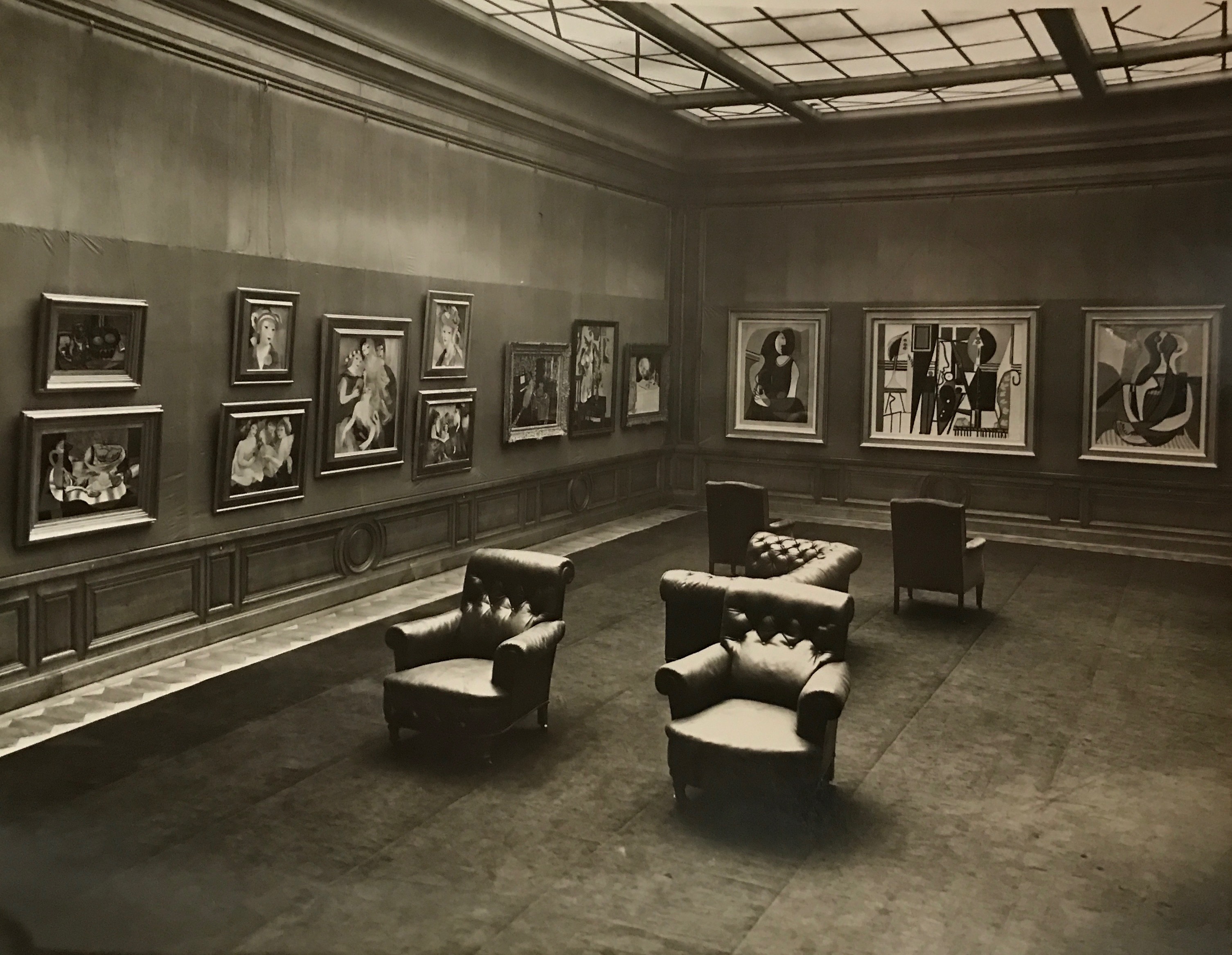
Fig. 2: Galerie Paul Rosenberg, group exhibition, 1929 (Picasso and Laurencin in principal gallery.)
The Paul Rosenberg Archives, a Gift of Elaine and Alexandre Rosenberg, [III.A.1.18]. The Museum of Modern Art Archives, New York. (Photo MaryKate Cleary)
© Succession Picasso/DACS, London2017. © ADAGP, Paris and DACS, London 2017.
The “Galerie de l’Effort Moderne” launched in 1918 by Léonce Rosenberg, and Kahnweiler’s Galerie Simon were each significant sites of promotion of cubist-derived art in the post-war years, based in the same part of the city, although they operated on a less spectacular scale, and also in distinct contrast to each other. Rosenberg was based in a hôtel on the rue de la Baume and pursued an active – and ultimately overambitious – programme of exhibitions which framed the group of artists he had under contract as part of a coherent modern school. The main gallery on the first floor was quite large. It was lit from the side and soberly furnished and decorated. [Fig. 3] This was, according to Paul Fierens, “a place of refreshment, peace and light.” He also noted that for better or worse it was little visited.18 This was partly due to its location in a quiet street but also to a certain dogmatic quality to its artistic policy. The Galerie Simon was also discreetly situated, in the rue d’Astorg. The converted premises were relatively modest, but larger than Kahnweiler’s first gallery. Here he disposed of four quite high rooms. He used them to pursue a similar general policy as before the war: he focused on a small group of living artists engaged in cubist-related personal development, amongst whom Juan Gris became the central figure. Work was shown and made available here for dedicated collectors, in an environment that was intimate and slightly austere. Conforming to the generalised practice of promotion Kahnweiler did now hold regular monographic exhibitions of the artists in his “stable”.19
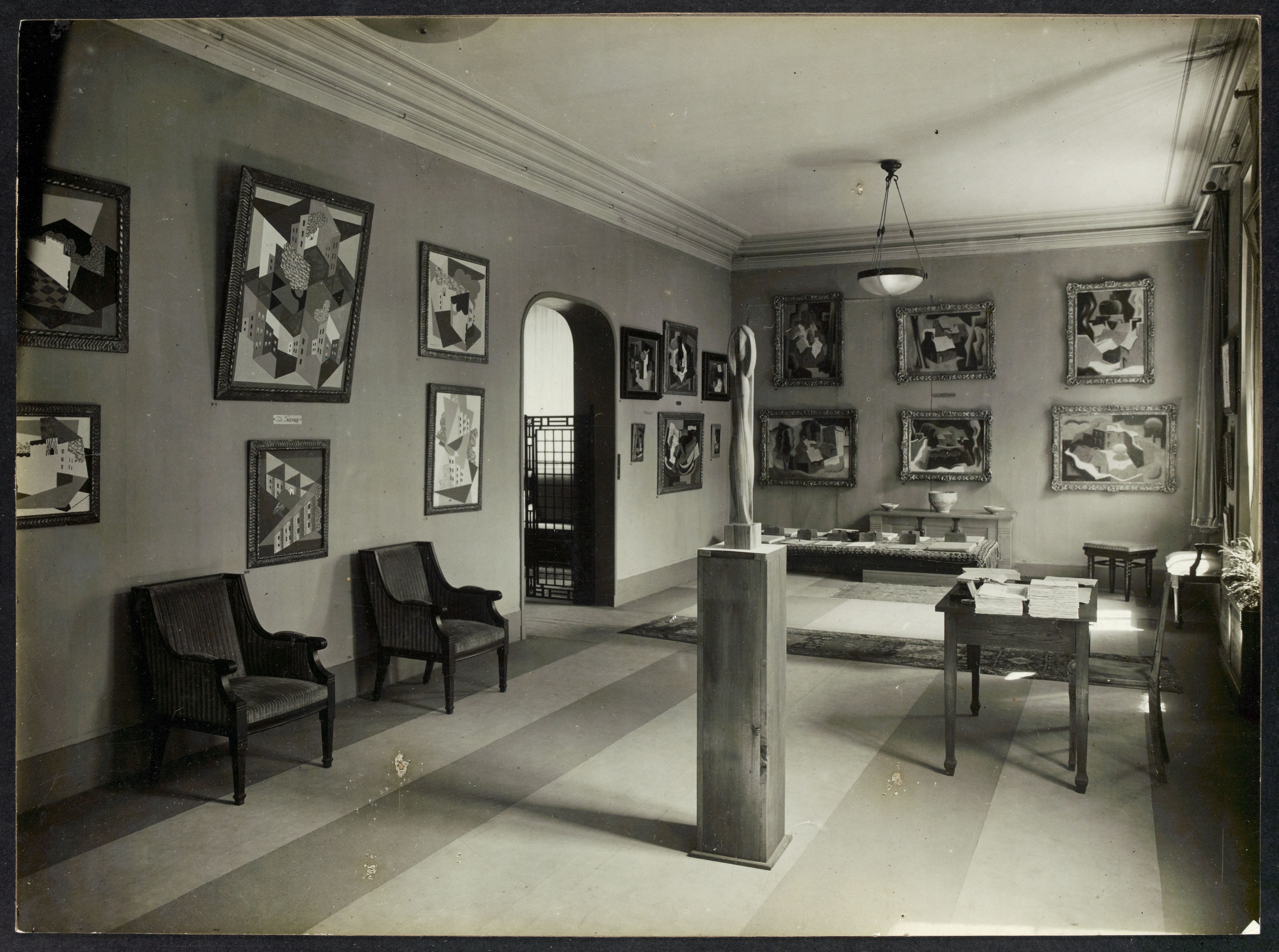
Fig. 3 : Galerie de l’Effort Moderne, 1921. Group exhibition (main gallery with works by Survage, Gris, Metzinger and Csaky.) Fonds Léonce Rosenberg, Musée National d’Art Moderne, Paris (RMN, Paris.) © ADAGP, Paris and DACS, London 2017.
Contemporary architectural trends only had a limited impact on gallery environments in Paris during this period, both because of the nature of the commercial spaces they occupied and because dealers largely opted for the reassurance provided by an established framing context. However, one initiative in this sense was taken on the right bank in 1926. When Katia Granoff, the secretary of the new “consensual” Salon des Tuileries, opened a gallery, she turned to Perret frères, who had designed the Palais de Bois for the group in 1924, to remodel the interior of the boutique on the boulevard Haussmann that she had leased for the purpose. They designed a suite of carefully articulated rooms with plain walls and simple detailing, with a sophisticated lighting system in the ceiling. The Galerie Granoff supported contemporary figurative painters, particularly Chagall and Friesz: the restrained classicism characteristic of Perret provided a suitable framework for art that was modern but not “extreme”.20
[Fig. 4 ]
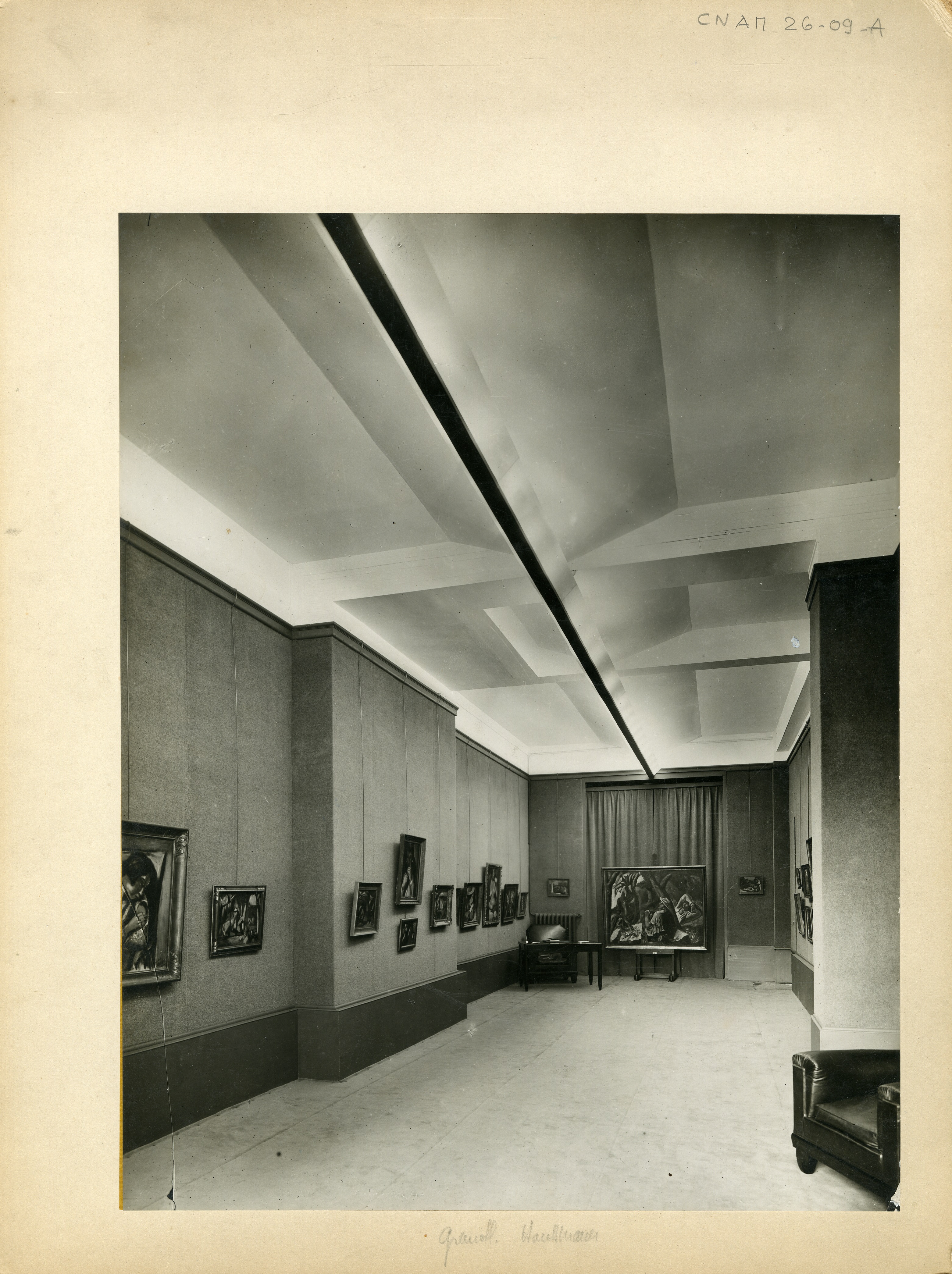
Fig. 4: Galerie Granoff, Boulevard Haussmann, Paris. Interior designed by Auguste Perret and Perret Frères, 1926. CNAM/SIAF/CAPA/Archives d’architecture du Xxe siècle/Auguste
Perret/UFSE/SAIF/2017. © DACS 2017.
Granoff had to close this gallery in 1928 when her backer suffered a financial collapse. She then moved to premises on the Quai de Conti, which Perret frères also refitted. The network of galleries on the left bank engaging with contemporary art grew throughout the decade. In 1930 Fage cited a total of forty-three, of which more than half were located on or near the rue de Seine. He contrasted the general atmosphere of these establishments with the formality of the right bank: “Galleries here have a more modest appearance (...) One enters as one does at home or a friend’s.”21 These small galleries, with very different orientations and with disparate financial means, provided the interested public with a comprehensive panorama of contemporary art, in sympathetic settings and with a degree of quality assurance. Important and characteristic examples amongst them include the Galerie Zborowski with holdings by “School of Paris” artists including Modigliani and Soutine; the Galerie Pierre which held the first Surrealist exhibition in 1925 and had a contract with Joan Miró; the Galerie Marseille (founded before the war) which supported French painters including Dunoyer de Segonzac, and the Galerie Jeanne Bucher which had evolved from a book shop selling prints, which held stocks of work by André Bauchant and Jean Lurçat in particular, and organised exhibitions by Mondrian in 1928 and Lipchitz in 1931. Display practices in these spaces were generally orthodox if restrained. However, there were were some instances where a specific effort was made to incorporate modern design ideas. Fage noted this trend in the relatively few galleries that opened in Montparnasse in the late 1920s, including the Galerie d’Art Contemporain on the Boulevard Raspail. An interesting initiative in this respect was taken by Christian Zervos and his wife Yvonne in 1934, partly in response to financial difficulties brought on by the depression. They converted the ground floor of the Cahiers d’Art offices on the rue du Dragon into a gallery which promoted contemporary international architecture and design, alongside the work of artists Zervos supported, including Kandinsky.22
In Berlin in 1918 Wolfgang Gurlitt renovated the gallery on Potsdamer Strasse again – a testimony to the buoyancy of the German market during the war, and to the idealism associated with Expressionist art at the time. The exhibition rooms included a large top-lit gallery in light tones, a lower room in traditional red and on the first floor a furnished apartment evocative of the home of a cultured collector. The building was decorated with mosaics and stained glass by Max Pechstein whose “star” dominated the whole, according to Georg Biermann. This was a “Temple of Art” and an inspiration for the role of culture in the future.23 This was an optimistic view, but despite the critical situation in Germany after the defeat, the market for contemporary art – particularly prints – was dynamic in the immediate post-war years. In that context Alfred Flechtheim, who had re-opened a gallery in Düsseldorf in 1919, established a network of branches, in Berlin, Frankfurt, Cologne and Vienna, between 1921 and 1923. However, the inflation crisis of 1922-3 and its consequences had a drastic impact on the market. Business dried up and some galleries closed – including the Galerie Ferdinand Möller specialising in contemporary art which Möller had opened in Berlin in 1918 on Potsdamer Strasse, initially functioning in conjunction with his existing business in Breslau.24 From mid-1925 matters improved: Berlin could not rival Paris in terms of the range and prosperity of its gallery network, but in the years preceding the financial crisis of 1929 and its aftermath a small group of specialised dealers established its position both nationally and internationally as a centre of the trade in contemporary art in Central Europe.25
The revival of the market allowed Alfred Flechtheim to extend and remodel his gallery on the Lützowufer in the Tiergarten district in 1927. (He had moved to Berlin in 1923 and the capital was now his headquarters.) Julius Meier-Graefe praised what he argued was the understated, but calculated, Parisian style of presentation that Flechtheim had always employed and that his architect Paul Mahlberg had managed to retain: “(...) No luxury, light, agreeable wall covering, side lighting. The rest comes from the paintings.”26 The greatest influences on Flechtheim as a dealer were Paul Cassirer and D-H. Kahnweiler, each of whom had cultivated (in different ways) display practices that were restrained and respectful of individual works, encouraging focused, concentrated viewing. Meier-Graefe decried what he suggested was the brash, overly commercial approach of most Berlin dealers. In fact other galleries promoting contemporary art at this time adopted comparable modes of presentation. Other aspects of policy were also held in common – as in Paris, galleries promoted a select group of artists through a combination of group and individual exhibitions, with supporting catalogues. The key differences between Berlin galleries were in the resources at their disposal, and their relationship to French art. Paul Cassirer had built his business on the promotion of French and German art related to Impressionism. This remained at the core of the gallery’s activity, (including after his death in 1926), but it also now encompassed selected German artists from the younger generation. In a sign of his post-war stature E.L. Kirchner had two exhibitions at the gallery in 1924 and 1926. Similarly, Flechtheim was chiefly associated with German artists from the pre-war Dôme circle and the old Parisian “avant-garde”, but he also supported Beckmann, Klee and Grosz in the later 1920s. In both cases, therefore, – although subject to criticism from some sides – in their case the still powerful prestige of art from Paris was used to support more contentious forms of German art. Their exhibitions were also demonstrations of their influential positions in the network of collectors and museums supporting modern art in Germany, as they drew on them for loans or, as Flechtheim did in 1925, publicised their purchases.27 Exhibitions such as that of the Impressionists held at the Kunstsalon Cassirer in the autumn of the same year which, Karl Scheffler noted, set a standard for good art and indicated how extensively these artists had been collected before the war in Germany, consolidated the gallery’s reputation, and its function as a taste-setter in the art world.28
In 1925 and 1927 two galleries of a different kind were installed in the vicinity of the Galerie Flechtheim, the Galerie Neumann-Nierendorf at Lützowstrasse 32, and the Galerie Ferdinand Möller at Schöneberger Ufer 38. Both campaigned specifically for contemporary German art, including notably Beckmann, Dix, ex-members of Die Brücke group and their “expressionist” successors, and artists associated with the Bauhaus. They used their exhibition programmes to highlight the character and achievements of their key artists, and also to promote appreciation of the overall nature and quality of current German art. Neumann-Nierendorf presented an overview of Otto Dix’s work in 1926, for example, and a group show on recent sculpture a year later. Möller inaugurated his new gallery with exhibitions of the work of Max Kaus and Georg Mosson, alongside a group that included Heckel, Kirchner, Pechstein and Schmidt-Rottluff. In 1930 he organised monographic shows of Nolde, Mueller, Heckel and Tagore, and also an ambitious themed exhibition entitled Vision und Formgesetz, co-curated with the critic Ernst Kallai from the Bauhaus, which explored the common ground of expressionism and abstraction. Karl Nierendorf also had links to the Bauhaus circle – he had co-published the Bauhaus book of 1923. Attention to the design features of the space was an important aspect of both these galleries. The Neumann-Nierendorf gallery featured furniture by Marcel Breuer, the Möller gallery was fitted out by the architect Hans Poelzig. Works were hung well spaced out on plain walls with diffuse lighting. The general effect was sober, reflective and discreetly aligned with modern German design concepts.29 [Figs. 5,6 ]
Although benefiting from improved market conditions, these were relatively modest galleries. A more dramatic indicator of the prosperity of the Berlin art scene at the time was the move of the Galerie Thannhauser from Munich to Berlin in 1927. Thannhauser had played a key role in the promotion of modern art in Germany before the war, comparable in Munich to that of Cassirer in Berlin. The new gallery on the Bellevuestrasse was on a style and scale that was comparable to the major Parisian galleries with which it collaborated. The opening exhibition was a survey of French art from the mid-nineteenth century to the present and monographic shows of Gauguin and Matisse were presented in 1928 and 1930. Here, as at Bernheim-jeune and Paul Rosenberg, a modern tradition was traced, for the admiration and acknowledgement of an international elite, in an imposing and luxurious setting.30 [Fig. 7 ]
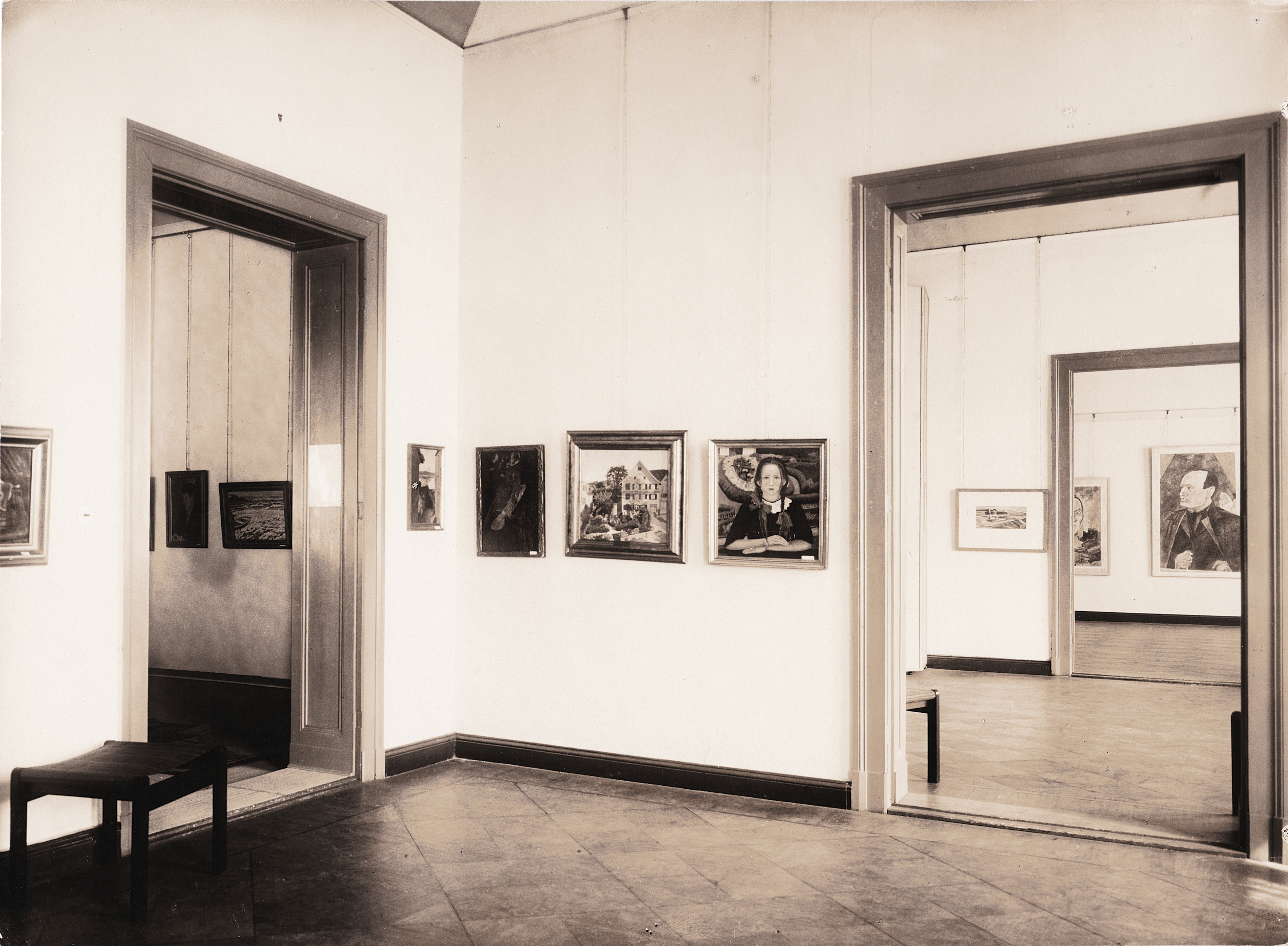
Fig. 5 : Galerie Neumann-Nierendorf, 1925. (Probably Living German Artists exhibition, including Otto Dix.) (Courtesy Gallery Nierendorf, Berlin.)
© DACS 2017.
The style of display practised in these galleries, in which carefully grouped and framed paintings were hung against a rich textile background, remained the dominant model for exhibitions whose function was to confirm the status – and high-end market worth – of the art on show. Its persistence was apparent at the Galerie Georges Petit after its takeover by a consortium of dealers led by Etienne Bignou, with a programme of presenting the masters of nineteenth and twentieth century art, including Matisse in 1931 and Picasso in 1932. A move towards plainer textures and a lighter colour scheme was apparent in some aspects of the display but only to a limited degree.31 While, as we have seen, other models of presentation that were less grandiose and which in some cases engaged with cutting-edge design were practised by middle-ranking dealers in both Paris and Berlin, “avant-garde” exhibition forms were largely absent from the commercial sector. Art dealers managed the delicate relationship between the cultural and financial value attributed to individual art objects. How they presented these played a key role in this process, particularly in the case of contemporary art, where both these values were unstable. This induced a relative conservatism in the manner in which the work was framed. While the Surrealists’ assault on the conventional environment of the Wildenstein Gallery in 1938 was highly effective as publicity, this approach was not taken up by dealers who supported artists associated with the group.32 Conversely, the “White Cube” concept of the gallery, where neutrality of walls and space are used to assert aesthetic purity, was a nascent but not fully realised one in commercial galleries of the period considered here.33
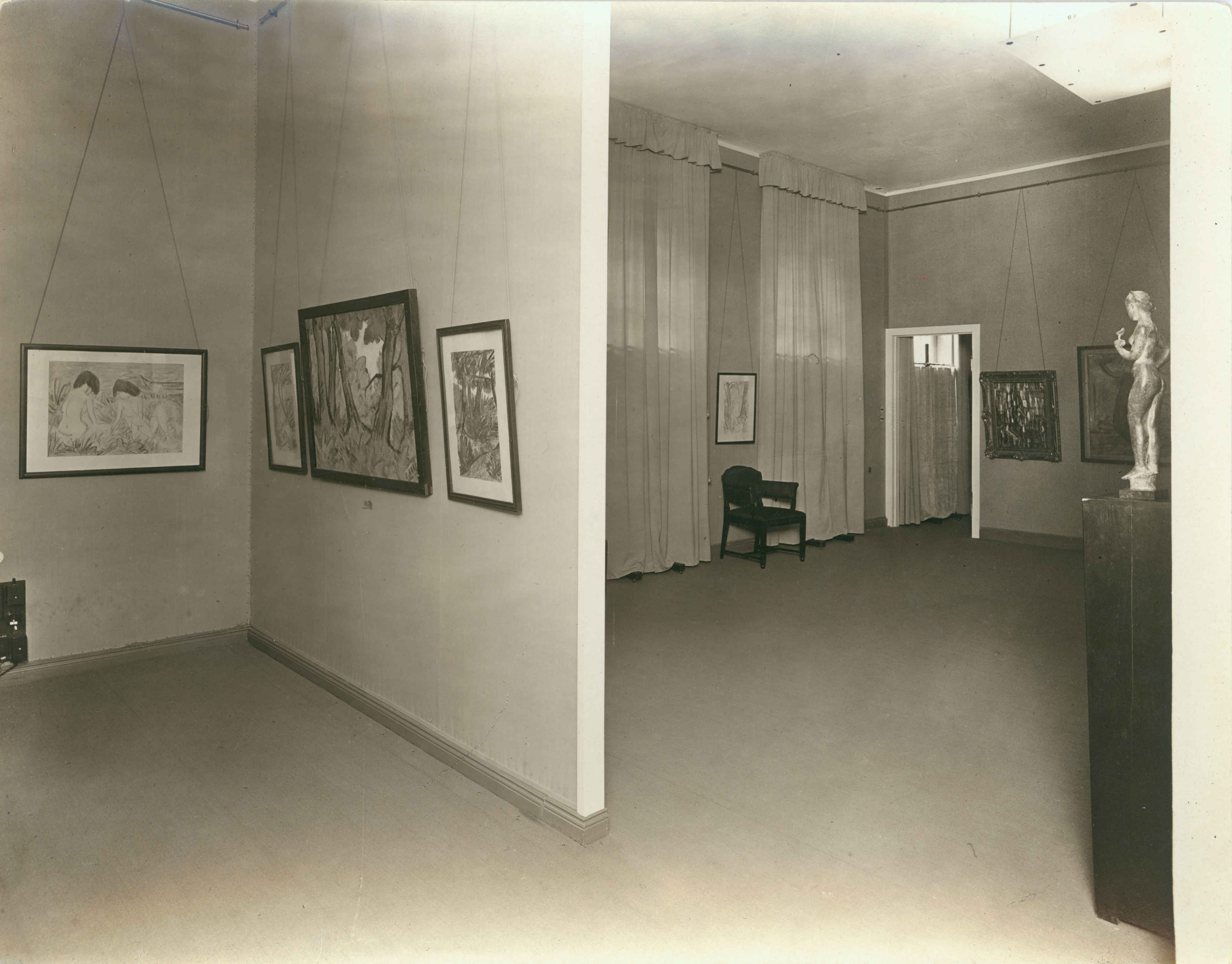
Fig. 6 : Galerie Ferdinand Möller, c. 1927. Works by Otto Mueller and Christian Rohlfs.
Künstlerarchiv, Nachlass Ferdinand Möller, Berlinische Galerie, Berlin.
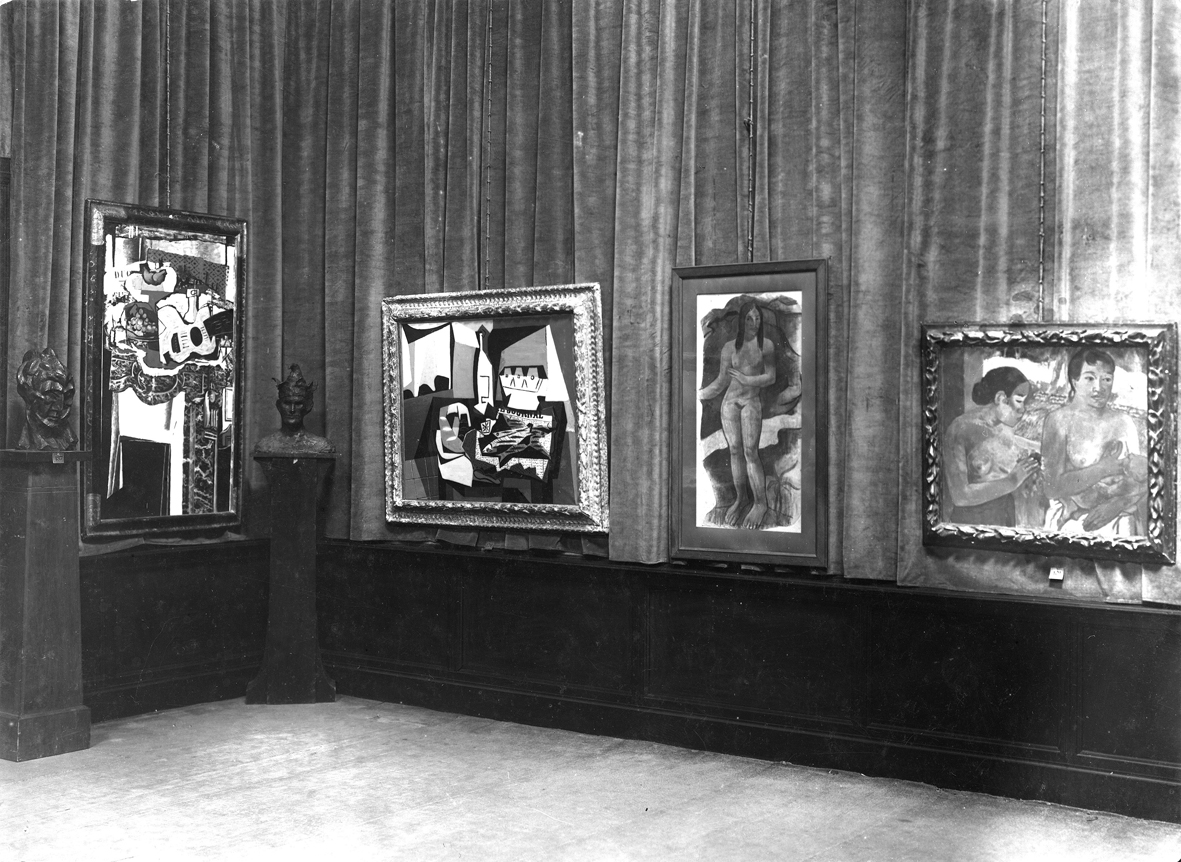
Fig. 7: Galerie Thannhauser Berlin, Sonderausstellung, 1927 (Main gallery with paintings by Braque, Picasso and Gauguin.)
ZADIK - Zentralarchiv für deutsche und internationale Kunstmarktforschung, Köln, A77, X,3,1.
Malcolm Gee is a Visiting Fellow in Art History at Northumbria University.
1 Notably: Pierre Vaisse, La IIIe République et les peintres (Paris: Flammarion, 1995); Patricia Mainardi, The End of the Salon. Art and the State in the Early Third Republic (Cambridge/New York/ Melbourne: Cambridge University Press, 1993); Fae Brauer, Rivals and Conspirators. The Paris Art Salons and the Modern Art Centre (Newcastle: Cambridge Scholars, 2013); Martha Ward, Impressionist Installations and Private Exhibitions, in The Art Bulletin, 73/4 (1991), 599-622.
2 Fonds Vauxcelles, INHA library Paris, carton 67, –The note was written in 1910.
3 Sylvie Patry, Paul Durand-Ruel et les expositions particulières en 1883, in Sylvie Patry (dir.), Paul Durand-Ruel. Le Pari de l’Impressionisme (Paris: Réunion des musées nationaux, 2012), 76-92; Ward, Impressionist Installations, 617-8.
4 On the gallery space at the rue Laffitte see Caroline Durand-Ruel Godfroy, Paul Durand-Ruel’s marketing practices, in Van Gogh Museum Journal (2000), 84-5.
5 Ann Dumas, Ambroise Vollard, Patron of the Avant-Garde, in Rebecca A. Rabinow, ed., Cézanne to Picasso. Ambroise Vollard, Patron of the Avant-Garde (New York: The Metropolitan Museum of Art, 2006), 10, 25. Gertrude Stein memorably recalled the efforts she and her brother had to make to be allowed to see paintings by Cézanne that he had stored away: Gertrude Stein, The Autobiography of Alice B.Toklas, (London: Penguin Books, 1966), 34-7.
6 Daniel-Henry Kahnweiler, Mes galeries et mes peintres. Entretiens avec Francis Crémieux (Paris: Gallimard, 1961), 41.
7 Peter Paret, The Berlin Secession. Modernism and Its Enemies in Imperial Germany (Cambridge Massachusetts and London: Harvard University Press, 1980); Nicolaas Teuwisse, Vom Salon zur Secession Berliner Kunstleben zwischen Tradition und Aufbruch zur Moderne 1871-1900 (Berlin: Deutscher Verlag für Kunstwissenschaft,1986); Robin Lenman, Artists and Society in German 1850-1914 (Manchester and New York: Manchester University Press, 1997), ch. 3 and 4. On the founding year of the Secession, cf. Sabine Meister, Die Vereinigung der XI die Künstlergruppe als Keimzelle der organisierten Moderne in Berlin, PhD thesis (Freiburg/Breisgau, 2006).
8 Paret, 70. The reading room was illustrated in Dekorative Kunst, 1899 Bd. 3, 223. Van der Velde also designed spaces for Keller & Reiner, who were primarily dedicated to selling the applied arts. See: Bianca Berding, Der Kunsthandel in Berlin für moderne angewandte Kunst von 1897 bis 1914 (Berlin/Munich 2012), 129-186.
9 Bernhardt Echte and Walter Feilchenfeldt, “Eine neue Klassik”. Kunstsalon Cassirer 1912-1914 (Wädenswil: Nimbus Kunst und Bücher, 2016), 7-98.
10 Curt Glaser, Neue Kunstsalons in Berlin, in Die Kunst für Alle, XXIX.6 (1913), 128-130. On the Galerie Macht see Anke Daemgen, ‘The Neue Secession in Berlin 1910-1914. An artists’ association in the rise of Expressionism’ (Ph.D. Thesis, London University: 2001), 79-133.
11 Andrea von Hülsen-Esch, Das Unternehmen Der Sturm und Herwarth Walden als Unternehmer, in Andrea von Hülsen-Esch and Gerhard Finkh, eds., Der Sturm. Zentrum der Avantgarde (Wuppertal: Von der Heydt-Museum, 2012), 201-225.
12 Glaser, Neue Kunstsalons, 129 (he noted that the rooms were not ideally suited to the art on show); Karl Scheffler, Kunstaustellungen, in Kunst und Künstler XII, 3 and 4 (1913/14), 176, 229. On Feldmann’s pioneering activities see Christel Hollevoet-Force, Aux origines de la rencontre entre Cubisme et “art nègre”: Otto Feldmann, promoteur de Picasso en Allemagne avant 1914, in Denise Vernerey-Laplace and Hélène Ivanoff, eds., Les artistes et leurs galeries: Réceptions croisées – Paris-Berlin 1900-1950 (Presses Universitaires de Rouen-Le Havre, forthcoming.)
13 For a historical survey of dealing locations in Paris see: Félicie Maupeou and Léa Saint-Raymond, Les “marchands de tableaux” dans le Bottin du commerce: une approche globale du marché de l’art à Paris entre 1815 et 1955, in Artl@s Bulletin 2, no. 2 (2013): Article 7, and Léa Saint-Raymond, Félicie de Maupeou and Julien Cavero. “Les rues des tableaux. Géographie du marché de l’art parisien (1815-1955), in Artl@s Bulletin 4, no. 1 (2015): Article 6.
14 André Fage, Le Collectionneur de Peintures Modernes (Paris: Les Éditions Pittoresques, 1930), 132-135. Paul Rosenberg had installed his gallery here in 1910 after splitting from his brother Léonce.
15 Fage, Le Collectionneur, 126; 83, faubourg Saint-Honoré, in Bulletin de la vie artistique, 6/3 (1925), 55-58; Pierre Georgel, The Jean Walter and Paul Guillaume Collection: History and Aims, in From Renoir to Picasso. Masterpieces from the Musée de l’Orangerie (Montreal Museum of Fine Arts, 2000), 39-41.
16 Reviewing a Braque exhibition in 1926 Louis Vauxcelles admired its “tranquil elegance, good taste, measure, French sensibility”, Carnet de la semaine 14 March 1926. Tériade ironised that “two solitary armchairs, like two judges from the Inquisition, reach out their arms to you, or, rather, seize you by the throat: the presence of masterpieces..”, Nos enquêtes. Entretien avec M. Paul Rosenberg, in feuilles volantes, 9 (1927), 1-2.
17 Élie Barnavi and Benoît Remiche (dir.), 21 Rue la Boétie. Picasso, Matisse, Braque, Léger (Paris: Musée Maillol, 2017), sections 1-3. This exhibition was based on the book by Rosenberg’s granddaughter Anne Sinclair, 21 Rue la Boétie (Paris: Grasset, 2012).
18 Paul Fierens, L’Effort Moderne, in Paris Journal, 14 December 1923.
19 Pierre Assouline, L’Homme de l’art. D-H. Kahnweiler 1884-1979 (Paris: Balland, 1988), 212.
20 Katia Granoff, Histoire d’une Galerie (Paris: 1949), 9-24.
21 Fage, 119.
22 Chara Kolokytha, Christian Zervos, les Galeries Cahiers d’Art et M.A.I., la Suppression des –ismes de l’Art, in Vernerey and Ivanoff, eds., Réceptions croisées,
23 Georg Biermann, Der neue Salon von Gurlitt und die Pechstein Ausstellung, in Der Cicerone, X/13-14 (1918), 215.
24 Inflation also caused a rupture between Paul Cassirer and his Parisian partners over payment for works on loan from the Pellerin collection. Relations were only restored in 1924 through state assistance and the good offices of Walter Feilchenfeldt and Grete Ring, who both became partners in the firm: Christina Feilchenfeldt, Walter Feilchenfeldt: Verleger und Kunsthändler, in Anna-Dorothea Ludewig, Julius H. Schoeps and Ines Sonder, eds., Aufbruch in die Moderne.Sammler, Mäzene und Kunsthändler in Berlin 1880-1933 (Cologne: DuMont Buchverlag, 2012), 272-91.
25 Angelika Enderlein, Der Berliner Kunsthandel in der Weimarer Republik und im NS-Staat (Berlin: Akademie Verlag,2006), 30-72; Gesa Jeuthe, Kunstwerte im Wandel. Die Preisentwicklung der deutschen Moderne im nationalen und internationale Kunsmarkt 1925 bis 195 (Berlin: Akademie Verlag, 2011), 32-44.
26 Die neuen Räume der Galerie Flechtheim in Berlin von Julius Meier-Graefe, in Frankfurter Zeitung 29 May 1927, cited in: Alfred Flechtheim Sammler. Kunsthändler. Verleger (Kunstmuseum Düsseldorf, 1987), 180.
27 In Der Querschnitt in 1925 – illustrated in Alfred Flechtheim Sammler. Kunsthändler. Verleger, p. 130.
28 Impressionisten bei Paul Cassirer, in Kunst und Künstler, XXIV/2 (1925), 72.
29 Eberhard Roters, Galerie Ferdinand Möller. Breslau-Berlin-Köln 1917-1956 (Berlin: Mann Verlag, 1984), 87-122; Katrin Engelhardt, Ferdinand Möller und seine Galerie. Ein Kunsthändler in Zeiten historischer Umbrüche (Universität Hamburg, 2013), 52-77; Anja Walter-Ris, Die Geschichte der Galerie Nierendorf. Kunstleidenschaft im Dienst der Moderne Berlin/New York 1920-1995 (Berlin: Freie Universität, 2003), ch. 4. (The gallery was a partnership set up between Karl Nierendorf and I.B.Neumann after the latter had departed for the United States in 1923 with the ambition to break into the market there. The move to Lützowstrasse was prompted by improved conditions in Berlin.)
30 Emily D. Bilski, The “Moderne Galerie” of Heinrich Thannhauser (Munich: Jewish Museum/Edition Minerva, 2008), 33-36.
31 Simonetta Fraquelli, Picasso’s retrospective at the Galeries Georges Petit, Paris 1932: a response to Matisse, in Tobia Bezzola, ed., Picasso by Picasso. His first museum exhibition 1932 (Kunsthaus Zurich/Prestel, 2010), 76-101.
32 On the exhibition see Annabelle Görgen, Exposition Internationale du Surréalisme Paris 1938. Bluff und Täusschung- Die Ausstellung als Werk (Munich: Silke Schreiber, 2008).
33 For the related topic of museum display see Charlotte Klonk, Spaces of Experience. Art Gallery Interiors from 1800 to 2000 (New York and London: Yale University Press), ch. 3.